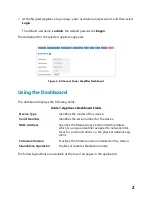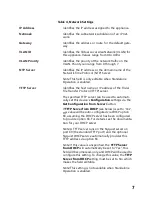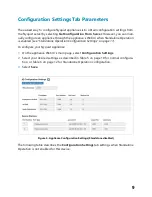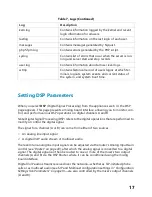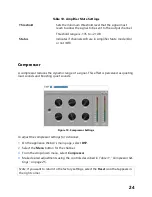
12
Table 6. Configuration Settings (Standalone enabled)
Device Type
Displays the type of this device.
Device Name
Provide a name for this device.
Web Username
Provide a web username for this appliance.
Web Password
Provide a web password for logging into the appliance.
Web Confirm Password
Re-enter the password used to log into the appliance.
Time Zone
Select the time zone in which the device resides.
Prioritize Line Input
If a channel simultaneously receives input signals from
both a network input and a line input, “Yes” means the line
input is used, “No” means the network input is used.
Yes or No
Channel A/B Load
Impedance
Specify the impedance load of the connected speaker(s).
Low (typically 4–16 ohms) or High (typically 1000+ ohms)
Channel A/B Output
Power
Controls the output power to the speaker.
This can be a value from -6 to +6 dB.
Enable SIP Calls
Enables this device to receive one-way SIP calls, wherein
only the caller can be heard (such as announcements). If
enabled, a number of SIP-related configuration settings
are displayed.
Yes or No
SIP Server Address
a
Specify the IP address of the SIP Registration Server with
which the device will register.
SIP Network Port
Specify the IP port on which to communicate with the SIP
Registration Server (typically 5060).
SIP Codecs
Displays a read-only list of codecs allowed on SIP sessions.
SIP Extension
(Channel A/B)
Specify the SIP extension corresponding to Channel A or B.
The extension, along with the IP address, is used to specify
the URI used to place a SIP call to this extension:
sip:<extension>@<local_ip_address>
SIP User Name
(Channel A/B)
Specify the SIP user name used to register Channel A or B
with the SIP server.





